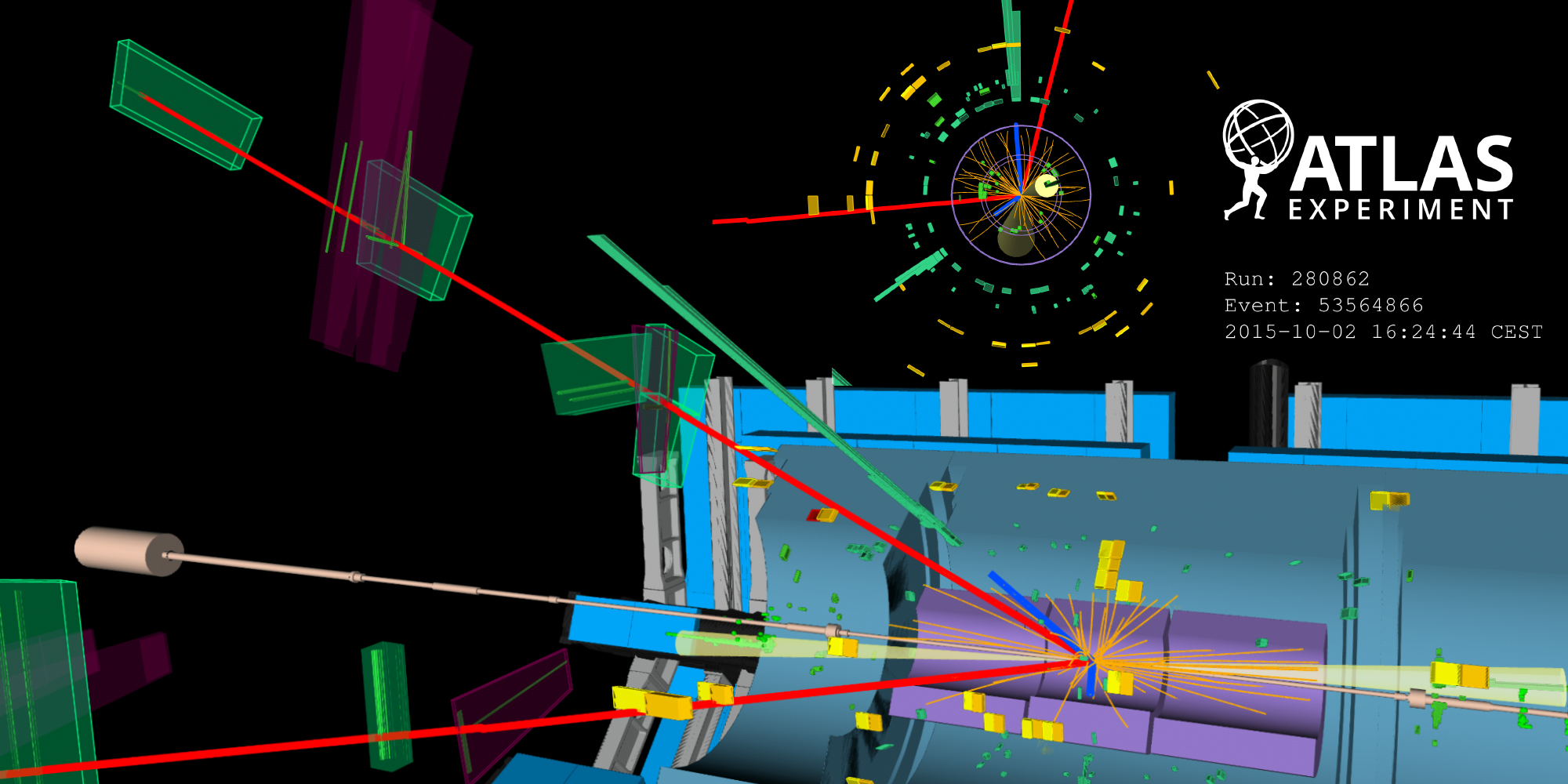Discovery channels join forces for detailed investigation of the Higgs boson
11 January 2022 | By
The ATLAS Collaboration has released updated measurements of the Higgs boson properties using the full LHC Run-2 dataset (recorded 2015-2018). The new result combines the latest studies of two Higgs boson decay channels that were key to its discovery: the H→ZZ*→4ℓ channel, where the Higgs boson decays into two Z bosons, in turn decaying into four leptons (electrons or muons); and the H→γγ channel, where the Higgs boson decays into two photons.
Though still quite rare, these Higgs boson decays can be clearly identified and measured by the ATLAS experiment, allowing physicists to study the properties of the Higgs boson in precise detail and to stringently test various predictions of the Standard Model. Such thorough studies of the Higgs boson also provide unique opportunities for physicists to search for new physics processes.

Members of the ATLAS Collaboration shared this latest probe of the Higgs boson today at the Lepton Photon 2021 conference. They presented a refined measurement of the total Higgs boson production cross section, a quantity which is related to the chance of the Higgs boson being produced in a proton-proton collision at the LHC. On their own, the H→ZZ*→4ℓ and H→γγ decay channels have uncertainties of about 9.8% and 9.6% (respectively) on the cross-section measurement. ATLAS’ new study statistically combines these channels, resulting in an uncertainty of only 7.0%. This level of improvement would only be possible in the individual channels with another 3 years of LHC data, showcasing the impressive potential of such combined studies. The measured cross section is 55.5 ± 3.9 pb, in agreement with the Standard Model prediction of 55.6 ± 2.8 pb.
Additionally, ATLAS physicists have improved their measurement of the production cross section as a function of various kinematic variables, such as transverse momentum. The Higgs boson can be produced with non-zero momentum in the transverse plane of the detector. Studies of both the H→ZZ*→4ℓ and H→γγ channels can precisely measure this transverse momentum, allowing physicists to examine the production cross section with respect to this kinematic variable. The combination of both channels is shown in Figure 1. Once again, the combination provides a more accurate measurement, with errors typically 40% smaller compared to the individual channels. Physicists also found good agreement with various theoretical predictions of the Standard Model.
The new measurement of the Higgs-boson cross section has an uncertainty of just 7.0% – such accuracy would only be possible in the individual channels with another 3 years of LHC data.

This measurement was also used to look for the presence of new physics processes involving the Higgs boson and bottom (b) and charm (c) quarks. Any modifications to the interaction strength between the Higgs boson and these quarks – for example, by physics processes beyond the Standard Model – will influence the overall value and shape of the production cross section as a function of the transverse momentum. In other words, by studying the observed shape of the cross section, physicists can examine the interaction strength of the Higgs boson and these quarks.
Researchers use coupling modifiers (κb and κc) to describe changes to the production cross section’s shape as a function of transverse momentum. These are equal to 1 in the Standard Model, and any deviation would indicate the presence of unknown physics processes. The results are shown in Figure 2, with a best fit value consistent with Standard Model expectations. The combined result excludes potential values of κb outside the range of -2.2 to 7.4, and κc outside the range of -10.3 to 16.6 with a 95% confidence level. This improves upon results from the individual channels and tightens the limits on where new-physics processes can occur.
These results demonstrate the benefit of combining individual analyses to study the Standard Model in precise detail. With the addition of more data in Run 3, physicists will further improve their search for new physics using the Higgs boson – and, if nothing new is found, they can reduce the places where it can hide.
Learn more
- Combined measurement of the total and differential cross sections in the H→γγ and the H→ZZ*→4ℓ decay channels at 13 TeV with the ATLAS detector (ATLAS-CONF-2022-002)
- Lepton Photon 2021 presentation by Hannes Mildner: Combined Higgs boson measurements and their interpretations in Effective Field Theories and new physics models with the ATLAS experiment
- See also the full lists of ATLAS Conference Notes and ATLAS Physics Papers.




